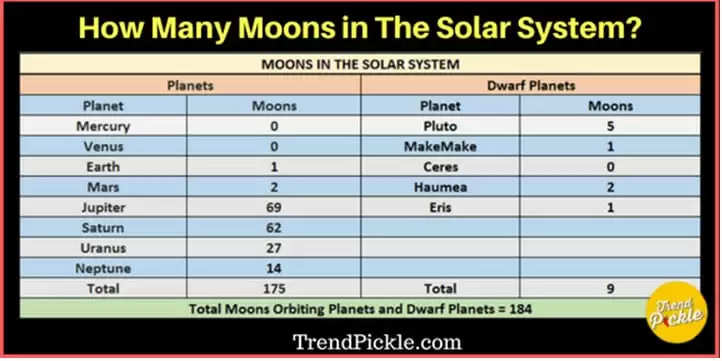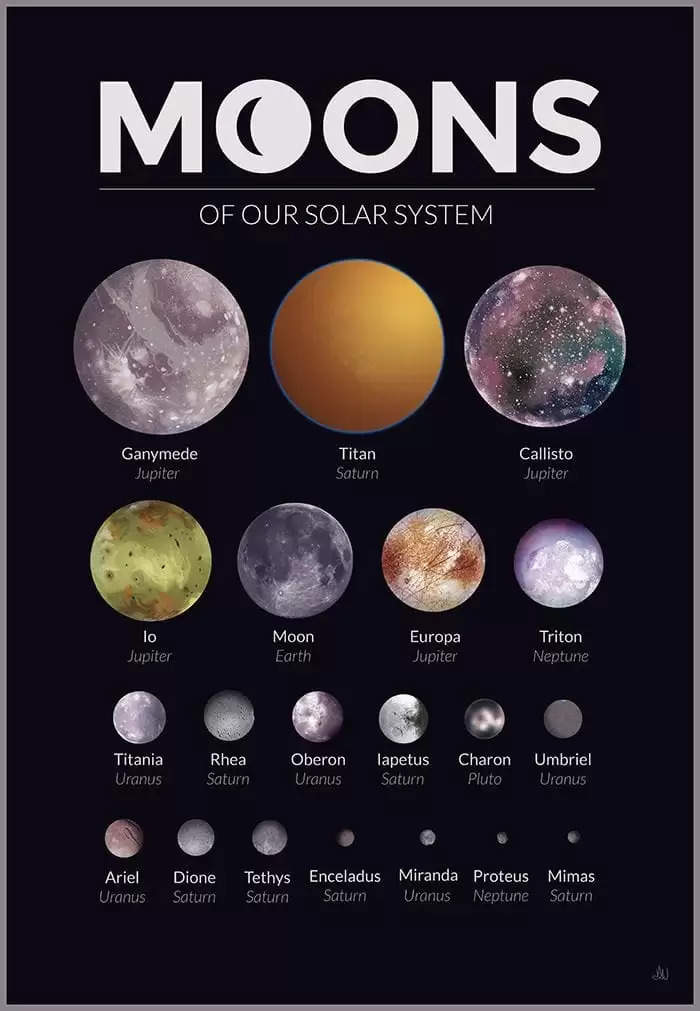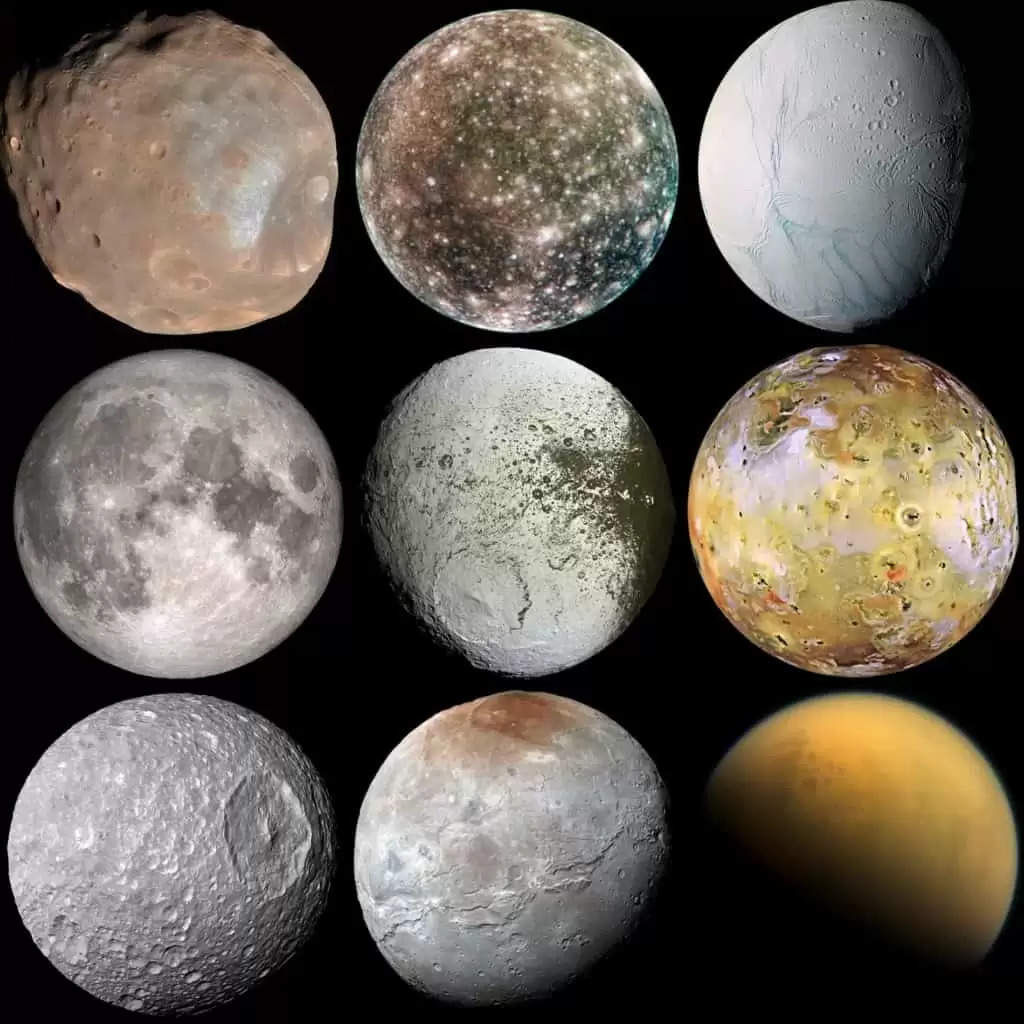How Many Moons Does Each Planet Have?

There are close to 350 moons in the Solar System. There is a total of 175 moons that orbit 8 planets in the Solar System and 9 moons that orbit 5 dwarf planets and the rest of them orbit other solar system bodies like asteroids etc.

Mercury and Venus
Venus and Mercury are the only planets that do not have any moon. Mercury does not have any Moon because Mercury is very close to the sun. Venus also doesn't have a moon, but the mystery behind it is yet to be solved.
Earth
we all know that Earth has only one Moon. Now I am going to share with you some amazing facts about the moon that will increase your knowledge and curiosity.
- Earth's only natural satellite in Moon. As of now, close to 1500 satellites are orbiting the Earth.
- Earth's moon is the fifth largest moon in the Solar system.
- The average distance between Earth and Moon is 384472 Kilometers.
- The Moon orbits the Earth in about 28 days.
- Luna 9 was the first spacecraft to land on the Moon in 1966.
- In 2009, 3 spacecraft confirmed that water exists on the Moon.

Mars
Mars has two Moons named Phobos and Deimos which are irregular in shape. Both were discovered in 1877.
Jupiter
Jupiter has 69 moons out of which 53 moons have been officially named. Jupiter's four main moons are Lo, Europe, Ganymede, and Callisto.
Saturn
Saturn has 62 moons out of which 53 moons have been officially named. Saturn's largest moon is named Titan.

Uranus
Uranus has 27 moons. All of these have been named after characters from Shakespeare's and Alexander Pope's works.
Neptune
Neptune's largest moon in Triton is similar in size to Earth's moon. It was discovered in 1846. Triton is the seventh-largest moon in the Solar System.
Pluto
The largest moon of the dwarf planet Pluto is named Charon. It was discovered in 1978 and has a diameter that is around half of Pluto's diameter.



